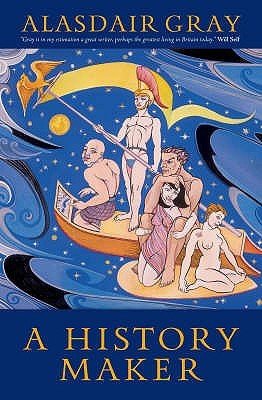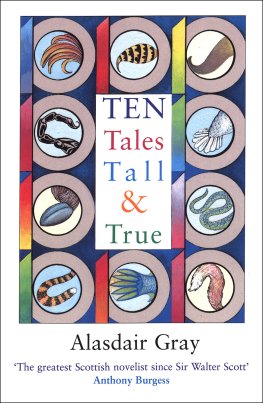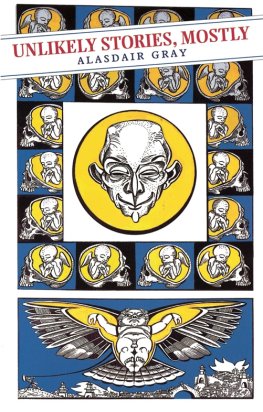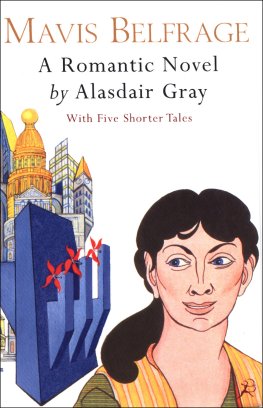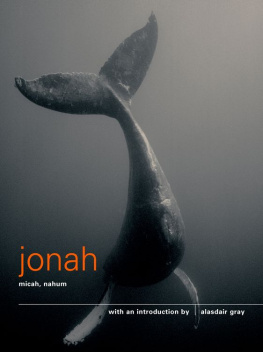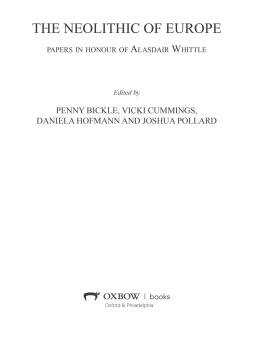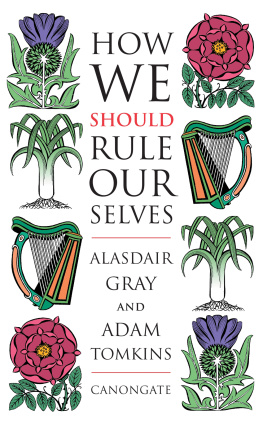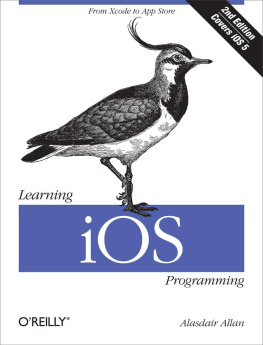Alasdair Whittle - The Times of Their Lives
Here you can read online Alasdair Whittle - The Times of Their Lives full text of the book (entire story) in english for free. Download pdf and epub, get meaning, cover and reviews about this ebook. year: 2018, publisher: Casemate Publishers & Book Distributors, LLC, genre: Home and family. Description of the work, (preface) as well as reviews are available. Best literature library LitArk.com created for fans of good reading and offers a wide selection of genres:
Romance novel
Science fiction
Adventure
Detective
Science
History
Home and family
Prose
Art
Politics
Computer
Non-fiction
Religion
Business
Children
Humor
Choose a favorite category and find really read worthwhile books. Enjoy immersion in the world of imagination, feel the emotions of the characters or learn something new for yourself, make an fascinating discovery.
- Book:The Times of Their Lives
- Author:
- Publisher:Casemate Publishers & Book Distributors, LLC
- Genre:
- Year:2018
- Rating:4 / 5
- Favourites:Add to favourites
- Your mark:
- 80
- 1
- 2
- 3
- 4
- 5
The Times of Their Lives: summary, description and annotation
We offer to read an annotation, description, summary or preface (depends on what the author of the book "The Times of Their Lives" wrote himself). If you haven't found the necessary information about the book — write in the comments, we will try to find it.
The Times of Their Lives — read online for free the complete book (whole text) full work
Below is the text of the book, divided by pages. System saving the place of the last page read, allows you to conveniently read the book "The Times of Their Lives" online for free, without having to search again every time where you left off. Put a bookmark, and you can go to the page where you finished reading at any time.
Font size:
Interval:
Bookmark:

Hunting history in the archaeology of Neolithic Europe
Alasdair Whittle

Published in the United Kingdom in 2018 by
OXBOW BOOKS
The Old Music Hall, 106108 Cowley Road, Oxford OX4 1JE
and in the United States by
OXBOW BOOKS 1950 Lawrence Road, Havertown, PA 19083
Oxbow Books and the author 2018
Hardback Edition: ISBN 978-1-78570-668-4
Digital Edition: ISBN 978-1-78570-669-1 (epub)
Kindle Edition: ISBN 978-1-78570-670-7(mobi)
A CIP record for this book is available from the British Library
Library of Congress Control Number: 2018943151
All rights reserved. No part of this book may be reproduced or transmitted in any form or by any means, electronic or mechanical including photocopying, recording or by any information storage and retrieval system, without permission from the publisher in writing.
For a complete list of Oxbow titles, please contact:
| UNITED KINGDOM | UNITED STATES OF AMERICA |
| Oxbow Books | Oxbow Books |
| Telephone (01865) 241249, Fax (01865) 794449 | Telephone (800) 791-9354, Fax (610) 853-9146 |
| Email: | Email: |
| www.oxbowbooks.com | www.casemateacademic.com/oxbow |
Oxbow Books is part of the Casemate Group
Front cover: Excavations by Miloje Vasi in 1933 at the great tell of Vina-Belo Brdo, Serbia. Photo: Faculty of Philosophy, Belgrade University.
For Clare, Anna and Natalie
I have incurred many debts in the gestation and writing of this book. First, I must thank the European Research Council which funded the project, The Times of Their Lives (ToTL: Advanced Investigator Grant 295412: 20122017), which I co-led with Alex Bayliss of Historic England. Before that, the project on causewayed enclosures in southern Britain and Ireland, published as Gathering Time with Frances Healy and Alex Bayliss, was funded jointly by the Arts and Humanities Research Council and English Heritage. I would also like to acknowledge the support of two previous Vice-Chancellors of Cardiff University, Sir Brian Smith and Sir David Grant.
I am more indebted to Alex Bayliss than I can adequately express, for her dedication, hard work and constant, critical questioning, throughout the course of the ToTL project and earlier, back to our first modelling of the chronology of southern British long barrows around 2000. ToTL would also not have been possible without the committed efforts of modellers and research associates and assistants alike, namely Frances Healy, Peter Marshall, Alistair Barclay, Seren Griffiths, Derek Hamilton, Bisserka Gaydarska, Dani Hofmann, Penny Bickle, Anett Oszts, Suzi Richer, Renate Ebersbach, Nancy Beavan and Jessica Smyth. We were also helped by Duan Bori, Judit Regenye, Julia Ebert and Mik Lisowski.
A glance at the long list of publications which have come out of ToTL (see the Bibliography) will show how many colleagues have worked with us in productive partnerships across Europe. They are simply too numerous to list fully here, but I want to thank the leaders of the wonderful teams with whom we cooperated, including: Leonardo Garca Sanjun; Eszter Bnffy; Wolfram Schier and Florin Draovean; Nenad Tasi; Arek Marciniak and Lech Czerniak; Ute Seidel; Anthony Denaire and Philippe Lefranc; Laure Salanova and Philippe Chambon; Caroline Malone; Muriel Gandelin; Nick Card; Colin Richards; Alison Sheridan; John Hunter; David Clarke; and Jane Bunting and Michelle Farrell. Although it is perhaps unfair to single out further individuals from these teams, I would also like warmly to thank Marta Daz-Zorita Bonilla, David Wheatley, Joanna Pyzel, Krisztin Oross, Jnos Jakucs, Tibor Marton, va gnes Nyerges, Kitti Khler, Miroslav Mari, Ann MacSween, Lekky Shepherd, Thomas Doppler, Arnaud Blin and Simon Stoddart. We all fondly remember the late Istvn Zalai-Gal.
The success of ToTL was due in no small measure to the radiocarbon laboratories in Oxford, Glasgow, Belfast and Mannheim with which we cooperated, and I would like to thank Christopher Bronk Ramsey, Gordon Cook, Elaine Dunbar, Paula Reimer and Bernd Kromer. Thanks are also due to Tomasz Goslar of Pozna.
Many other colleagues gallantly answered my questions during the writing of this book, willingly provided information and freely made available illustrations. In no particular order, these included: Krisztin Oross, Miroslav Mari, Adam Crnobrnja, Matthew Collins, Volker Heyd, John Chapman, Werner Stckli, Pierre Ptrequin, Douglass Bailey, Martin Furholt, Penny Bickle, Niels Bleicher, Johannes Mller, Colin Richards, Doris Mischka, Ruth Van Dyke, Nick Card, Antonia Thomas, Vladimir Slavchev, Verena Leusch, Vicki Cummings, Agathe Reingruber, Christian Jeunesse, David Reich, Iain Mathieson, Anna Szcsnyi-Nagy, Michael Kunst, David Wheatley, Katerina Douka, Amy Bogaard, Amy Styring, Mlanie Salque-Roffet, Richard Evershed, Richard Madgwick, Paul Lane, Urs Leuzinger, Rick Schulting and Inna Mateiciucov.
Other colleagues bravely agreed to read draft chapters and gave critical comments, including (again in no particular order): Douglass Bailey, Peter Marshall, Eszter Bnffy, Richard Bradley, Richard Madgwick, Penny Bickle, Dani Hofmann, Leonardo Garca Sanjun, Ollie Harris, Iain Mathieson, Frances Healy, Josh Pollard, Volker Heyd and Susan Greaney. Bisserka Gaydarska went through all the chapters, which deserves a special medal. I am grateful to all these colleagues for saving me from schoolboy errors, and not least for telling me when they disagreed with what I have tried to argue. Heather Giddens helped with a final edit.
In Cardiff, my administrative colleagues have played an equally important role behind the scenes in making ToTL work. I would like to thank: Emma Fisher, Heather Williams and Annie Brown in my School; Catherine Aymar, who served as our project support officer; Cerys Phillips, Laxmi Hirani and Stefania Benetton in the university Finance Office; Eevi Laukannen of the European Office for her invaluable help at the time of application, and Keith Sexton subsequently; and successive Heads of School, Ian Freestone, Terry Threadgold and Chris Williams, for their support. For support and encouragement I am also grateful to all my colleagues in Archaeology and Conservation, including Andy Cochrane and Marta Daz-Guardamino Uribe for taking over my teaching as ToTL progressed, and to Kirsty Harding for outstanding help and patience with illustrations, not only for this book but also for our many ToTL papers.
In Historic England, I am grateful to Shahina Farid and Victoria Savill for their willing help. Lynne Keays assisted with both sampling and archiving.
At Oxbow Books, Clare Litt and Julie Gardiner gave every support throughout the whole process of planning and writing this book.
On a personal note, finally, I would like to thank many people for helping me through difficult times in 2016 and 2017. The wonderful NHS staff in Cardiff and Abergavenny deserve all my heartfelt thanks, as do my brothers and faithful friends, including my Saturday morning companions in Monmouth. Above all, I am grateful to my three daughters for their loyalty and love, and I dedicate this book to them: the next generation.
If history requires narrative, it matters who tells the stories, and how. Several significant discussions of this, from Eric Wolfs Europe and the people without history (1982), Michel-Rolph Trouillots Silencing the past: power and the production of history (1995) and Edward Saids Orientalism (1995), to Jack Goodys The theft of history (2006), agree that when people are denied their history, they can be rendered powerless. History reveals itself only through the production of specific narratives, as Trouillot puts it (1995, 25), and control of sources, archives, narrative and reflection is paramount (Trouillot 1995, 26). The theme has been continued in a recent collection of archaeological and anthropological papers on early Africa (Schmidt and Mrozowski 2014), whose title, The death of prehistory , also neatly evokes the aim of my book. In being habituated to write about the past, prehistoric people of Europe and elsewhere in a very generalised, and frequently timeless, kind of way, I will argue that archaeologists have imposed a similar kind of denial of history, often unthinkingly. The aim of my book is to show how, using case studies from the European Neolithic period, we should try to write much more detailed narratives about people in the remote past of several thousand years ago. In so doing, we can attempt to take the pre- out of prehistory, and restore to centre-stage a sense of past peoples actions, choices and decisions.
Font size:
Interval:
Bookmark:
Similar books «The Times of Their Lives»
Look at similar books to The Times of Their Lives. We have selected literature similar in name and meaning in the hope of providing readers with more options to find new, interesting, not yet read works.
Discussion, reviews of the book The Times of Their Lives and just readers' own opinions. Leave your comments, write what you think about the work, its meaning or the main characters. Specify what exactly you liked and what you didn't like, and why you think so.


